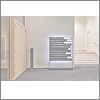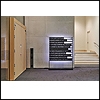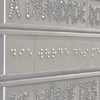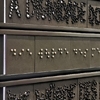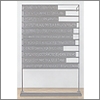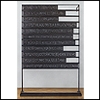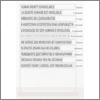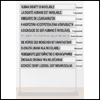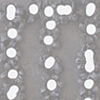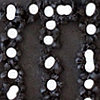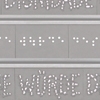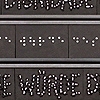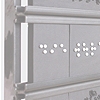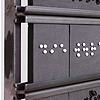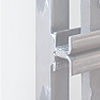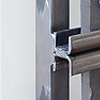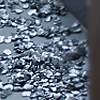"Human dignity is inviolable”
Barrier-free installation, 2012/2019
Black clay panels, shot through and drilled through, metal frame, projectile tray,
LED light strips, transformer; h/w/d = 206/142/42 cm
Strong media presence is currently being given to my human dignity installation in the Austrian Parliament. The barrier-free installation purchased by the Essl Foundation for its Zero Project is on loan to the newly renovated parliament in the foyer of the Erwin Schrödinger Lokal. The investigative committee takes place in this room. May all those interviewed in front of the installation always be aware of the value and respect towards the human being.
My work thematizes the principle that "Human dignity is inviolable”, (Charter of Fundamental Rights of the European Union, Article 1). This principle bridges all linguistic and cultural cultural differences within the European Union. To illustrate this I have selected ten of the official EU languages, used all three alphabets found in these alphabets languages and added Braille as a symbol of the importance of inclusion.
